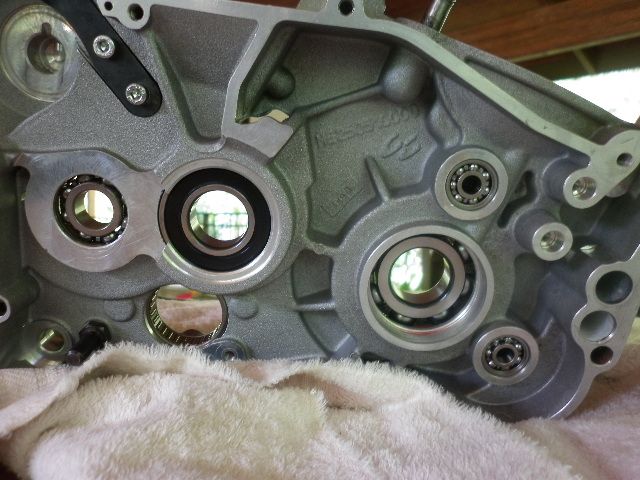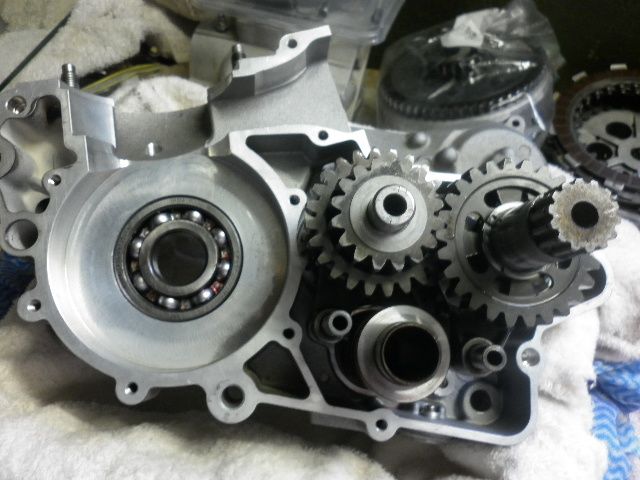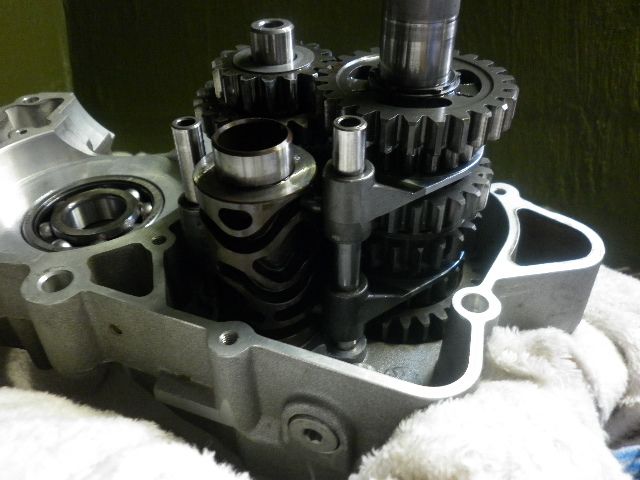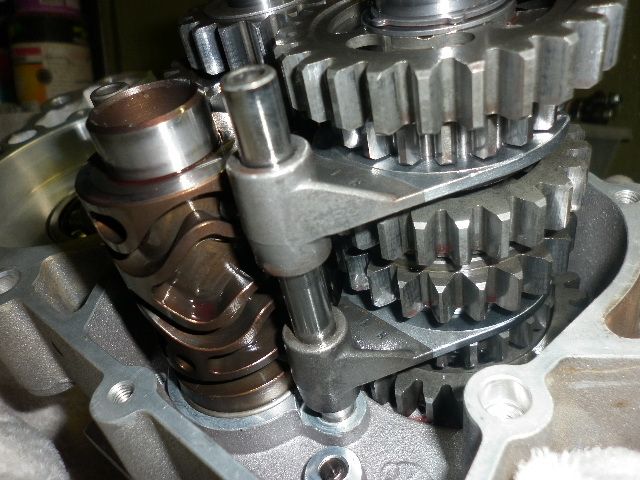I've done some research and I'm going to use the bearings I have without the seals. As stated above, neither of these bearings have been pressed in or out. The just dropped in with heated cases, and came out with heat and smacking the case against some rags. The fit when back to temp was good and no chance of pulling them out.
The flywheel side bearing is an SKF Explorer series with Polyamide 6,6 cage.
From SKFs website: Solid polymer cages are characterized by a favourable combination of strength and elasticity. The good sliding properties of the polymer on lubricated steel surfaces and the smoothness of the cage surfaces in contact with the rolling elements produce just little friction so that heat generation and wear in the bearing are at a minimum. The low density of the material means that the inertia of the cage is small. The excellent running properties of polymer cages under lubricant starvation conditions permit continued operation of the bearing for some time without risk of seizure and secondary damage.
http://www.skf.com/group/products/b...or-rolling-bearings/cage-materials/index.html
http://www.skf.com/binary/12-36038/6270-EN.pdf
From that it sounds like it will be up to the job. Back on target after dealing with a mega mind bong.







